362
The Peterbilt 362 is a Class 8 cab-over-engine (COE) truck that was known for its iconic flat-front design, tight turning radius, and spacious cab for its time. Though no longer in production, many 362s remain on the road today as collector rigs, specialty haulers, or in custom builds.
Common Uses
When in regular service, the Peterbilt 362 was widely used for:
- Long-haul trucking
- Urban freight (especially in tight city environments)
- Container and intermodal transport
- Auto haulers
- Specialty builds and vintage show trucks (nowadays)
Its COE design allowed for greater trailer length within overall length regulations and made it popular in cities and ports.
Cab Type
- Style: Cab-over-engine (COE)
- Cab Width: Approx. 96 inches (2.44 meters) – wide for its era
- Interior Layout: Generally roomy for a COE, with space for a sleeper and dual seats
- Floor Type: Flat or slightly contoured depending on trim; raised engine tunnel
Aftermarket Seat Compatibility
The Peterbilt 362 uses a classic vocational-style bolt pattern—approximately 4.68" x 12"—on most builds.
Fitment Notes:
- No adaptor plate is typically needed for most standard aftermarket seats
- However, due to the COE design, headroom and seat height are critical—low-profile seats are often preferred
Common aftermarket options:
-
National Ensign or Captain – bolt-in compatible with classic spacing
-
Bostrom Pro Ride – often used in older COEs and restoration builds
-
Knoedler Extreme LowRider – very compact for tighter cab setups
-
Gramag seats – may need checking for fit due to suspension height
Installation Tips
- Measure seat height carefully, especially in sleeper versions with overhead storage
- Some trucks had factory risers or spacers—these may need to be removed or modified
- If the 362 is being restored, verify the original bolt hole spacing as some had customized seat bracket
-

Bostrom Baja Standard (choose your options)
Bostrom Seating
Your Price: $679.00 - $1,067.00Bostrom’s Baja Series is the perfect blend of simplicity, durability, and comfort. The Baja’s ergonomic seat and Flex Support Cushion System reduce back stress, allowing you to maintain focus on the road. With its scissor action...12470xxYour Price: $679.00 - $1,067.00 -

Bostrom Patriot Standard (choose your options)
Bostrom Seating
Your Price: $976.00 - $1,171.00Perfect for local driving - The Patriot from Bostrom Seating! The Patriot seat offers the ultimate mix of features and functions for rugged and local delivery applications. Durable fabrics are available with flatter cushion side bolsters to...23560xxYour Price: $976.00 - $1,171.00 -

Bostrom ProRide Standard (choose your options)
Bostrom Seating
Your Price: $1,100.00 - $2,530.00The Bostrom Pro Ride delivers superior comfort for professional drivers. The Pro Ride’s combination of ergonomic cushions and Flex Support System reduces discomfort and fatigue – which means more up time for you! Pro Ride’s two...93xxxxxYour Price: $1,100.00 - $2,530.00 -

Bostrom T-Series T915 ADJUSTABLE SHOCK (choose your options)
Bostrom Seating
Your Price: $938.00 - $1,048.00Drive for miles enjoying Bostrom Seating's T Series. The T Series has proven durability and comfort. Its Flex Support Cushion System reduces cushion compression so that you are able to ride longer. Scissor action suspension delivers superior...23392xx-xxxYour Price: $938.00 - $1,048.00 -

Bostrom T-Series T915 Driver Swivel (choose your options)
Bostrom Seating
Your Price: $996.00 - $1,140.00Drive for miles enjoying Bostrom Seating's T Series with Driver Swivel. The T Series has proven durability and comfort. Its Flex Support Cushion System reduces cushion compression so that you are able to ride longer. Scissor action...234107X-XXXYour Price: $996.00 - $1,140.00 -

Bostrom T-Series T915 DUAL DAMPER (choose your options)
Bostrom Seating
Your Price: $830.00 - $978.00Drive for miles enjoying Bostrom Seating's T Series. The T Series has proven durability and comfort. Its Flex Support Cushion System reduces cushion compression so that you are able to ride longer. Scissor action suspension delivers superior...2324XXX-XXXYour Price: $830.00 - $978.00 -

Bostrom T-Series T915 Standard (choose your options)
Bostrom Seating
Your Price: $773.00 - $1,435.00Drive for miles enjoying Bostrom Seating's T Series. The T Series has proven durability and comfort. Its Flex Support Cushion System reduces cushion compression so that you are able to ride longer. Scissor action suspension delivers superior...23xxxxx-xxxYour Price: $773.00 - $1,435.00 -

Bostrom Wide Ride + Serta (choose your options)
Bostrom Seating
Your Price: $0.00 - $2,223.00Bostrom's Wide Ride + Serta redefines premium seating in the trucking industry. Bostrom Seating is redefining seat comfort with the ultimate Wide Ride Plus Serta® Cool ActionTM Gel Memory foam. Ultimate comfort through the...51xxxxxYour Price: $0.00 - $2,223.00 -
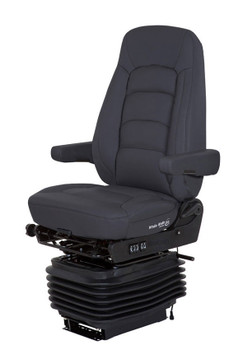
Bostrom Wide Ride + Serta with Heating and Venting (Choose your options)
Bostrom Seating
Your Price: $3,010.00 - $3,249.00Bostrom's Wide Ride + Serta and heat/venting redefines premium seating in the trucking industry. Bostrom partnered with Serta to develop the most comfortable truck seat in the market. They have integrated Serta's Cool Action Gel memory foam with their...5X00X2XYour Price: $3,010.00 - $3,249.00 -

Bostrom Wide Ride Core (choose your options)
Bostrom Seating
Your Price: $0.00 - $1,909.00Bostrom Wide Ride Core - New Technology, New Style, Smarter than Ever from Bostrom Seating If you are in and out of the cab frequency - The new Wide Ride CORE with Dump and Memory switch may be the right seat for you. The Wide Ride CORE provides...5Ax9xxxYour Price: $0.00 - $1,909.00 -
On Sale

GraMag Black Genuine Leather Truck Seat
GRAMAG
Your Price: $1,540.00 - $1,960.00GraMag new semi truck seat in black Genuine Leather with black/grey/tan stitching with air suspension for aftermarket seating for International, Freightliner, Kenworth, Volvo, Peterbilt semi trucks. On-Highway seat ideal for...AF-11003LEYour Price: $1,540.00 - $1,960.00 -
On Sale

GraMag Black Tough Cloth Truck Seat
GRAMAG
Your Price: $1,420.00 - $1,520.00GraMag new semi truck seat in black cloth with black/grey/tan stitching with air suspension for aftermarket seating for International, Freightliner, Kenworth, Volvo, Peterbilt semi trucks. On-Highway seat ideal for long haul...AF-11003CLYour Price: $1,420.00 - $1,520.00 -
On Sale

GraMag Mid Back Black Genuine Leather Truck Seat
GRAMAG
Your Price: $1,540.00 - $1,960.00GraMag mid back semi truck seat in black Genuine Leather with black or grey stitching with air suspension for aftermarket seating for International, Freightliner, Kenworth, Volvo, Peterbilt semi trucks. On-Highway seat ideal for...AF-21103LEYour Price: $1,540.00 - $1,960.00 -
On Sale

GraMag Mid Back SteadyRide MR (smart fluid) Black Leather Truck Seat
GRAMAG
Now: $3,680.00Was: $4,325.00GraMag Mid Back SteadyRide semi truck seat in black leather with black stitching will easily install in most all semi-truck cabs. The on-highway seat is ideal for long haul environments as it reduces whole-body-vibration up to 67%. ...AF-22013LENow: $3,680.00Was: $4,325.00 -
On Sale

GraMag Mid Back SteadyRide MR (smart fluid) with Heat and Vent Truck Seat
GRAMAG
Your Price: $3,820.00 - $3,920.00GraMag Mid Back SteadyRide semi truck seat in black leather black stitching will easily install in most all semi-truck cabs. This seat includes Heating and Venting. The on-highway seat is ideal for long haul environments as it reduces...AF-22113LEYour Price: $3,820.00 - $3,920.00 -
On Sale
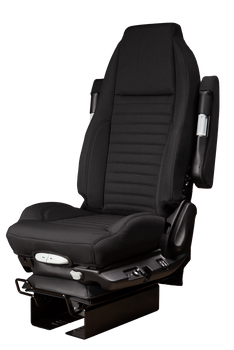
GraMag SteadyRide MR (smart fluid) Black Cloth Truck Seat
GRAMAG
Now: $3,450.00Was: $4,055.00GraMag SteadyRide semi truck seat in black Cloth with your choice of (black, grey, tan) stitching will easily install in most all semi-truck cabs. The on-highway seat is ideal for long haul environments as it reduces whole-body-vibration...AF-12013CLNow: $3,450.00Was: $4,055.00 -
On Sale
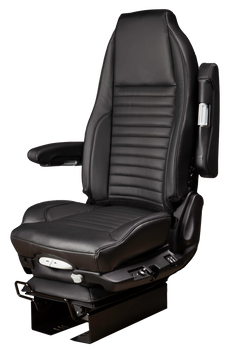
GraMag SteadyRide MR (smart fluid) Black Leather Truck Seat
GRAMAG
Now: $3,680.00Was: $4,325.00GraMag SteadyRide semi truck seat in black leather with your choice of (black, grey, tan) stitching will easily install in most all semi-truck cabs. The on-highway seat is ideal for long haul environments as it reduces whole-body-vibration...AF-12013LENow: $3,680.00Was: $4,325.00 -
On Sale

GraMag SteadyRide MR (smart fluid) Black Leather with Heat and Vent Truck Seat
GRAMAG
Now: $3,820.00Was: $4,489.00GraMag SteadyRide semi truck seat in black leather with your choice of (black, grey, tan) stitching will easily install in most all semi-truck cabs. This seat includes Heating and Venting. The on-highway seat is ideal for long haul...AF-12113LENow: $3,820.00Was: $4,489.00 -

Knoedler Air Chief Puffy Seat (choose your options)
Knoedler Manufacturers
Your Price: $1,658.00 - $1,830.00The Knoedler Air Chief line offers a customizable seat to meet the individual needs of drivers rather than a one seat fits all solution. All seats come standard with the following features: Puffy Overstuffed Channeled upholstery construction in...Air Chief with 730252-000Your Price: $1,658.00 - $1,830.00 -

Knoedler Air Chief Seat (choose your options)
Knoedler Manufacturers
Your Price: $1,301.00 - $2,678.00The Knoedler Air Chief line offers a customizable seat to meet the individual needs of drivers rather than a one seat fits all solution. All seats come standard with the following features: Upper and Lower Air Adjustable lumbar Color Definition ...Air ChiefYour Price: $1,301.00 - $2,678.00 -

Knoedler Air Chief Tall Back Seat (choose your options)
Knoedler Manufacturers
Your Price: $1,301.00 - $1,939.00Introducing the new Tall Back seat from Knoedler Manufacturers. The Tall Back seat is part of the Air Chief line. The main difference is a switch from the mid back with headrest design to the full/tall back style. All options available...Air Chief Tall BackYour Price: $1,301.00 - $1,939.00 -

Knoedler Harrier (choose your options)
Knoedler Manufacturers
Your Price: $1,086.00The Knoedler Harrier is an x-type air suspension seat with optional isolator lock out. The Harrier has been recently expanded to include a mid back, high back (Standard) and Tall Back Option, with optional arms, bellow cover and wide seat. ...9410Your Price: $1,086.00 -

National Admiral (choose your options)
National Seating
Your Price: $1,427.00 - $2,356.00The Admiral is the top of the line seat from National for comfort behind the wheel. As a step up from the Commodore, the Admiral includes both swivel and heat as well as adjustable damper. This seat packs a lot of value for the price...40049/40079Your Price: $1,427.00 - $2,356.00 -

National Admiral CT (choose your options)
National Seating
Your Price: $1,972.13 - $2,200.98The Admiral CT is the top of the line seat from National for comfort behind the wheel and includes Comfort Tek air circulation through out the seat. As a step up from the Admiral, the Admiral CT includes swivel and heat as well as cooling. Combine...40149/40179Your Price: $1,972.13 - $2,200.98 -

National Captain Seat (choose your options)
National Seating
Your Price: $743.00 - $942.00National Captain Seat (50766 low, 50765 mid, 50764 high) is the low cost fleet seat of choice. The Captain series is built using National Seating's top selling truck seat platform which is known for its ergonomic comfort and low cost of ownership...5076(4,5,6).xxxYour Price: $743.00 - $942.00 -
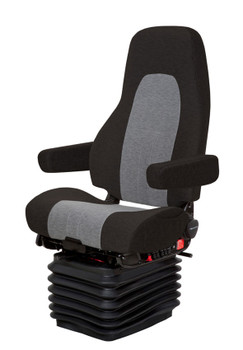
National Commodore Seat (choose your options)
National Seating
Your Price: $1,213.00 - $1,502.00National Commodore Seat (40050) is the long haul seat of choice. The Commodore truck seat helps ensure you get maximum uptime by helping to reduce the pain and strain which leads to increased downtime. The Commodore is the first in the National...40050Your Price: $1,213.00 - $1,502.00 -

National Corsair (choose your options)
National Seating
Your Price: $844.00 - $1,503.00National Corsair Seat (51100) is the low cost fleet seat of choice. The Corsair seat takes the best selling National 2000 design platform up a notch with enhanced comfort and styling. It utilizes National's model 95 air suspension which delivers a great...51100Your Price: $844.00 - $1,503.00 -

National Ensign Seat (choose your options)
National Seating
Your Price: $673.00 - $815.00National Ensign Seat (51111 mid, 51110 high) is the lowest cost fleet seat of choice. The Ensign series hi and mid back brings true comfort and durability to serve your economic seating needs. This seat is ideal for applications where you are...51111 or 51110Your Price: $673.00 - $815.00 -

National Mid Back Refuse Seat Grey Cloth
National Seating
Your Price: $1,255.00The Refuse Seat from National Seating has strong durability and low price point. This seat is the answer for waste management professionals. The seat cover is water and stain repellant and the cushion is sealed. The seat cushion will...40233.078 Grey OnlyYour Price: $1,255.00 -
On Sale
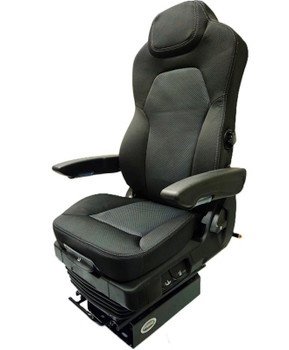
Prime Seating TC200 Touring Comfort Truck Seat
Prime Seating
Your Price: $630.00 - $810.00NEW TC200C from Prime Seating - with Optional Integrated Seat Belt The Best Affordable Air Ride Truck Seat Ever Introducing the NEW PRIME TC200C Two Tone Black Cloth Air Ride Truck Seat, a top-notch air suspension truck seat designed for...TC200Your Price: $630.00 - $810.00 -
On Sale

Prime Seating TC400 Touring Comfort Truck Seat
Prime Seating
Your Price: $910.00 - $1,115.00Prime Seating Introduces the New Touring Comfort 400 Series Air Ride Truck Seat! Updated styling makes this seat a great value with luxury features for a perfect fit! FEATURES & SPECIFICATIONS Dual Lumbar Support & Side Bolster...TC400Your Price: $910.00 - $1,115.00 -
On Sale

Prime Seating TC600 Series
Prime Seating
Your Price: $1,260.00 - $1,495.00Reserve while you can!! Your Dream Seat is now available from “Prime Seating”. “Prime TC600LBK” has all the functions and features you are dreaming about. One of key feature on Prime TC600LBK model is...TC600Your Price: $1,260.00 - $1,495.00 -

Sears Atlas II DLX (choose your options)
Sears Seating
Your Price: $1,356.00 - $1,902.00Atlas II DLX Discover what makes new Atlas II from Sears Seating the “Best in Class” truck seats for today’s heavy duty market. Enhanced Comfort: Atlas II has a back support structure contoured to the natural shape of...2D331Your Price: $1,356.00 - $1,902.00 -

Sears Atlas II DLX Thermassage (choose your options)
Sears Seating
Your Price: $2,069.00 - $2,427.00Atlas II DLX with Thermassage (Heat and Massage) Discover what makes new Atlas II from Sears Seating the “Best in Class” truck seats for today’s heavy duty market. Enhanced Comfort: Atlas II has a back support...2D531XXNBNSNYour Price: $2,069.00 - $2,427.00 -

Sears Atlas II LE - Heat and Cool (choose your options)
Sears Seating
Your Price: $2,350.00 - $2,609.00Atlas II LE with CVS - Cushion Ventilation System (Heat and Cool) Discover what makes new Atlas II from Sears Seating the “Best in Class” truck seats for today’s heavy duty market. Enhanced Comfort: Atlas II has a back...2D934XXBSNSNYour Price: $2,350.00 - $2,609.00 -

Sears Atlas II PC (choose your options)
Sears Seating
Your Price: $1,169.00 - $1,516.00Atlas II PC Discover what makes new Atlas II from Sears Seating the “Best in Class” truck seats for today’s heavy duty market. Enhanced Comfort: Atlas II has a back support structure contoured to the natural shape of...2DM38XXNNNNNYour Price: $1,169.00 - $1,516.00 -

Sears Atlas II VRS (choose your options)
Sears Seating
Your Price: $2,955.00 - $3,489.00Atlas II VRS - Magnetic Ride Control Driver Recruitment and Retention Having a Sears Atlas II ActiveVRS Magnetic Ride suspension seat in your cabs is a valuable driver recruitment tool and invaluable for driver retention. It can lower your...2D***Your Price: $2,955.00 - $3,489.00 -

Sears Sentry (choose your options)
Sears Seating
Your Price: $829.00 - $1,108.00Sentry Standard Features: Std. ToggleLink Air Suspension® with 6” travel & integrated riser Single locking slides with 9’ travel , isolator with 1.25” travel Sentry seat top with contoured back frame structure Contoured...1A131XXNNNNNYour Price: $829.00 - $1,108.00
